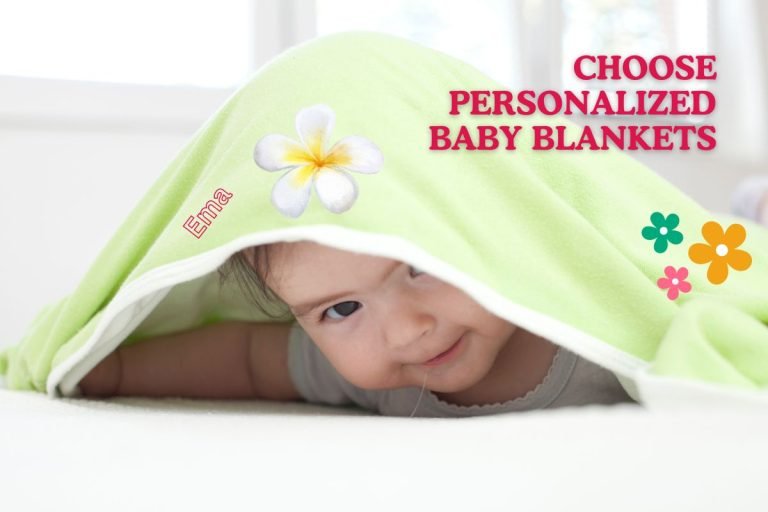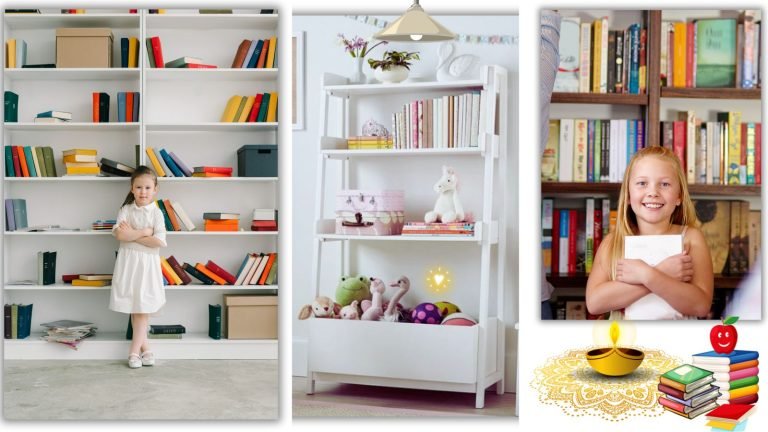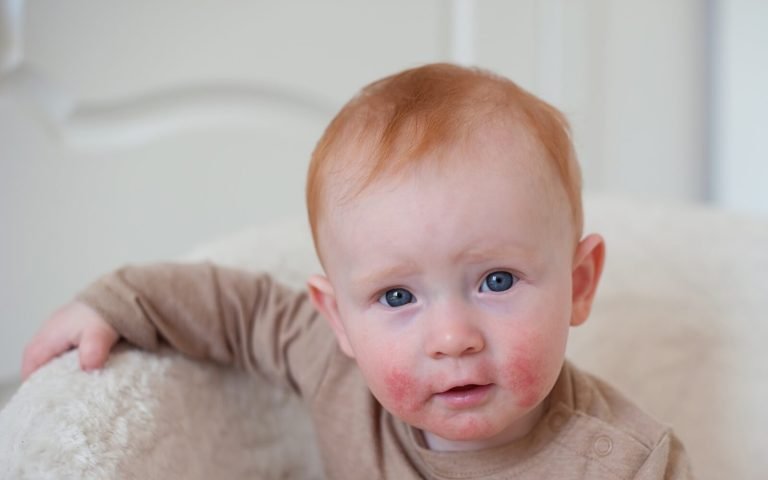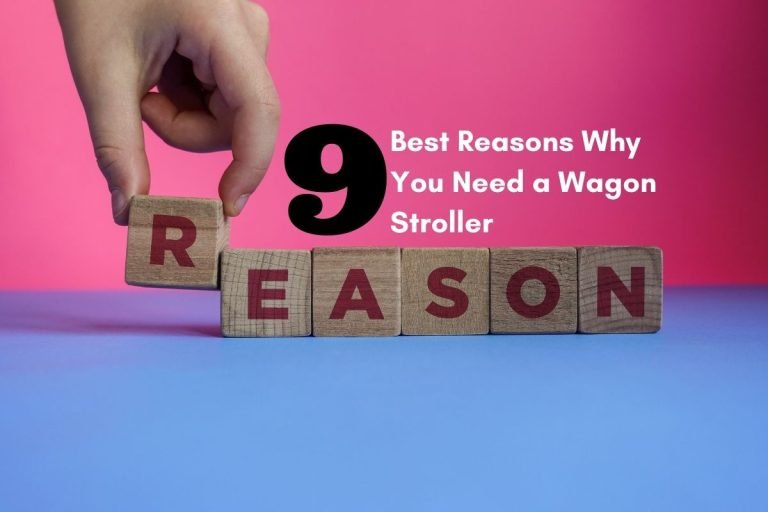How to organize a bookshelf for kids: A comprehensive Step-by-Step Guide in 2025
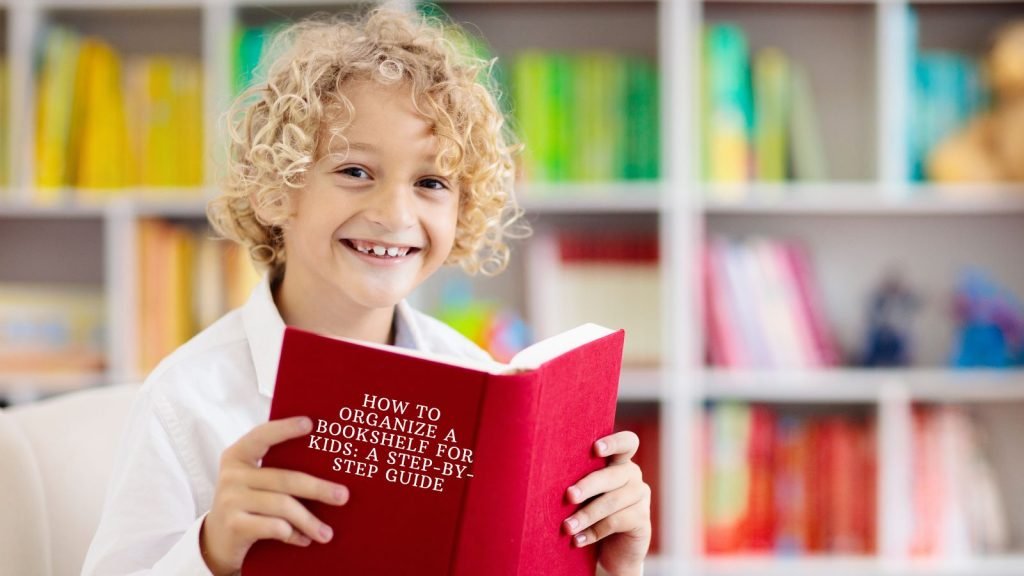
Are you wondering how to organize a bookshelf for kids’ properly? Organizing a bookshelf is crucial for encouraging kids to read. When books are neatly arranged, reading becomes fun and exciting for children. An organized kids’ library or bookshelf is like a treasure chest full of adventures waiting to be discovered!
This guide will provide easy-to-follow steps on how to organize a bookshelf for kids efficiently. From sorting board, picture, and chapter books into sections to using creative book bins and baskets for more access and storage, you’ll learn how to organize kid’s books to make your child’s bookshelf look neat while keeping them easily accessible.
Let’s get started turning your chaotic piles of books into a magical reading nook!
Why Organize a Kids’ Bookshelf?
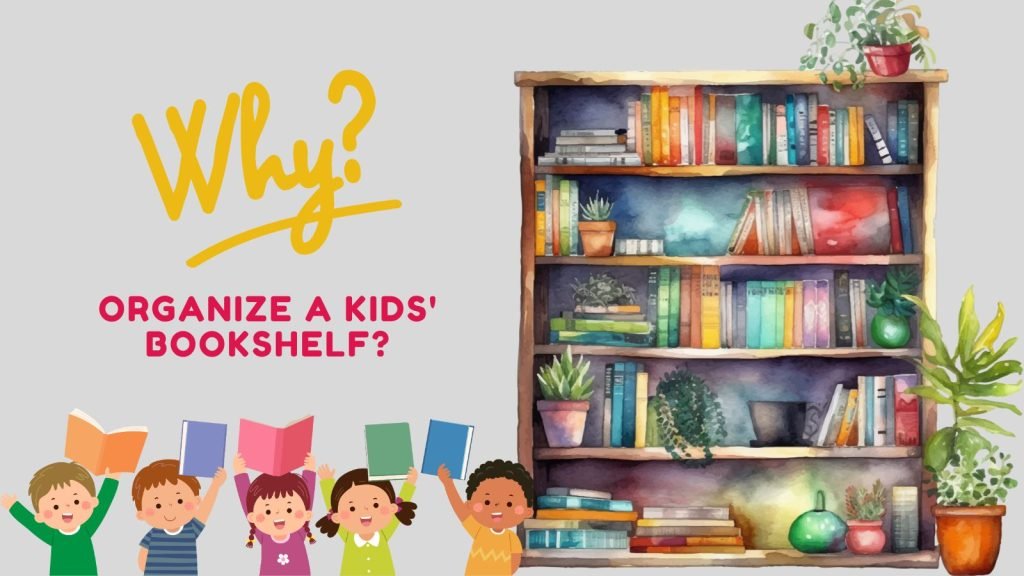
Organizing your child’s bookshelf is more than tidying up – it’s an investment in their growth and development. Here are three compelling reasons why you should make it a priority:
Encourage Reading Habit: An organized bookshelf makes books accessible and inviting, helping develop a lifelong love for reading in kids.
Teach Organization Skills: Involving kids in organizing teaches them how to organize a bookshelf for kids and helps them learn about categorization and organizational skills.
Reduce Clutter and Chaos: An organized kids’ bookshelf reduces book clutter and chaos, creating a calmer environment for reading and playtime.
Before You Begin – How to organize a bookshelf for kids
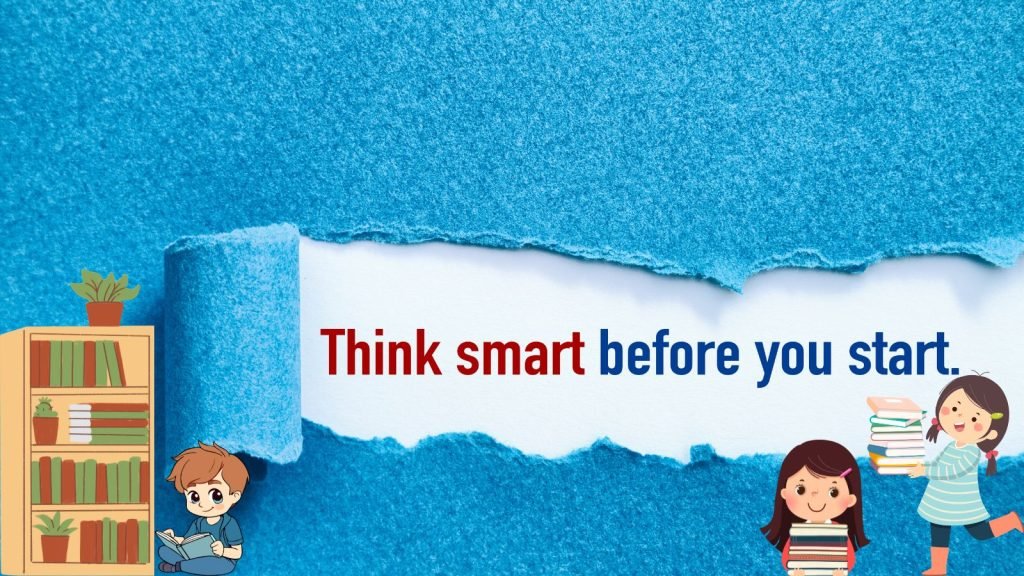
Before diving into the organization process, taking a few preparatory steps is essential to ensure a smooth and successful transformation of your house and child’s bookshelf. Here’s what you need to do:
- Assess Current Book Situation: Take stock of your child’s existing book collection, including the number of books and their types (board books, picture books, chapter books).
- Determine Bookshelf Space and Size: Measure the area and decide on the bookshelf size to fit the space and accommodate all the books.
- Gather All Books in One Place: Collect every book from around the house in their room, playroom, or living room and bring them together.
Let’s start with a step-by-step guide for making your kid’s bookshelf easier than ever.
Step 1: Sort Books into Categories
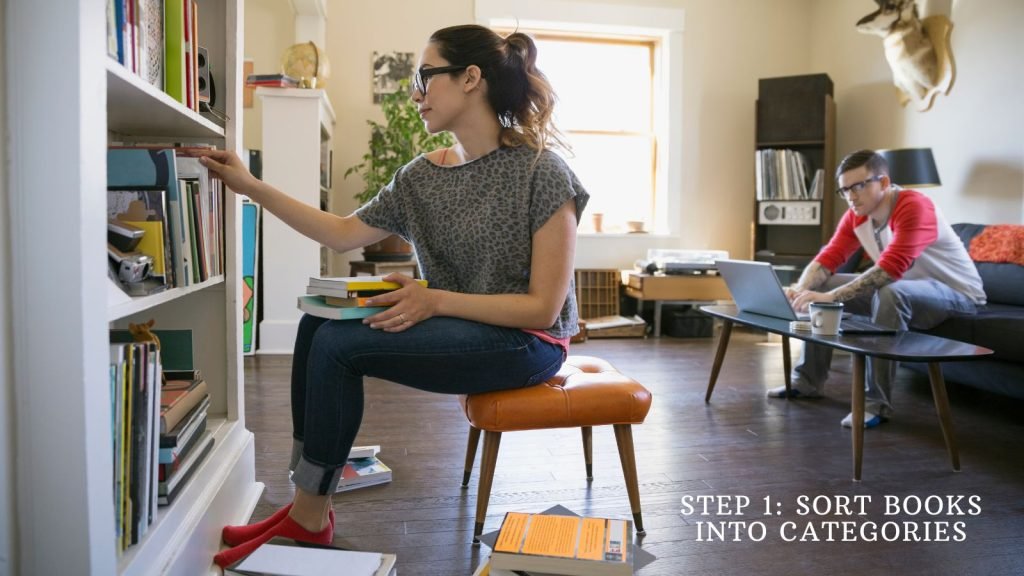
The first step in organizing your child’s bookshelf is to teach children to sort their books into distinct categories. This will make it easier to arrange the books and help your child quickly find the type of book they want. Here are the main categories to focus on:
Board Books: These sturdy, thick-paged baby board books are perfect for babies and young toddlers just beginning to explore the world of reading. Separate all the board books from the collection.
Picture Books: Vibrant, illustrated books with minimal text are a staple for preschoolers and early readers. Gather all the picture books together in their pile.
Early Readers: As your child starts recognizing words and reading simple sentences, early reader books bridge the gap between picture books and chapter books. Create a shelf or dedicated section for storing library books for these.
Chapter Books: Chapter books offer more advanced stories for easy readers and longer narratives for independent readers. Group all the chapter books in a separate category.
Step 2: Declutter
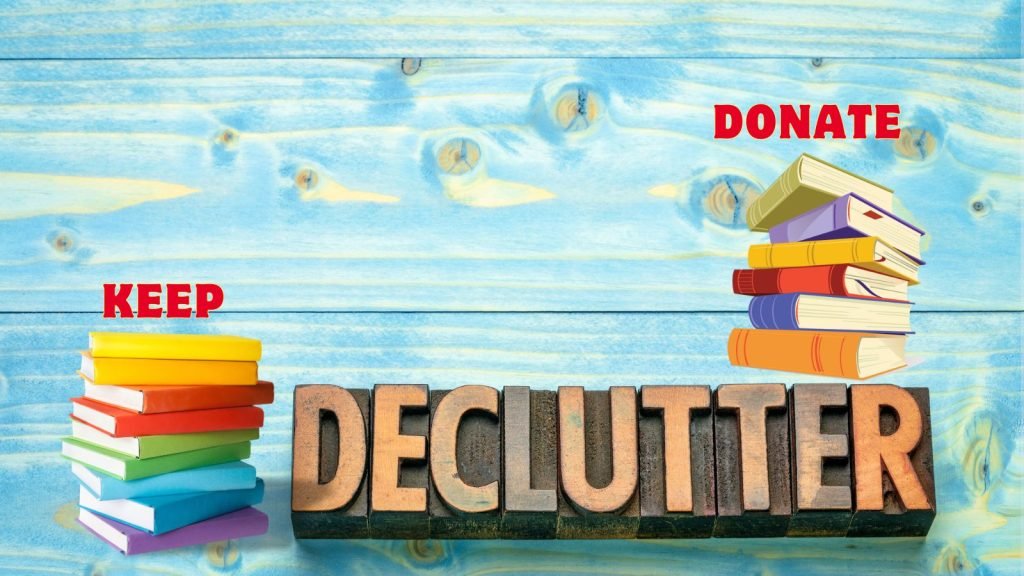
Decluttering your child’s bookshelf is crucial for creating an organized and inviting reading space. Understanding donation rules ensures responsible management of books that no longer serve their purpose while involving kids, which teaches valuable life lessons in generosity and organization.
Donation rules: First, knowing the donation rules applicable to your area or chosen charity is essential. This knowledge enables you to responsibly handle books your child has outgrown or lost interest in. By involving children in decluttering, you teach them the importance of tidiness and instill the values of generosity and sharing.
Involving kids in the process: Encourage decision-making by allowing kids to choose which books and pictures they want to keep, donate, or pass on to friends. This empowers them to take ownership of their belongings and understand the value of giving to others.
Step 3: Arrange Books on Shelves

Arranging books on shelves is critical to creating a functional and visually appealing reading space for your child, and it’s very important to know how to organize a bookshelf for kids.
Bottom Shelves for Youngest Kids: Place board books and sturdy picture books on the bottom shelves where they’re easily accessible to the little ones’ hands. This ensures that even the youngest readers can independently select books and explore the world of storytelling.
Middle Shelves at Eye-Level: Position books at eye level on the lowest and middle shelves, where your child can easily see and reach them without assistance. This encourages independence and fosters a sense of ownership over your child’s reading choices, empowering them to select books that pique their interest.
Top Shelves for Less-Accessed Books: Reserve the top shelves for books accessed less frequently, such as fewer books, reference books, or collections your child may not read as often. This idea maximizes the use of space while keeping favorite books within easy reach.
Step 4: Organize by System
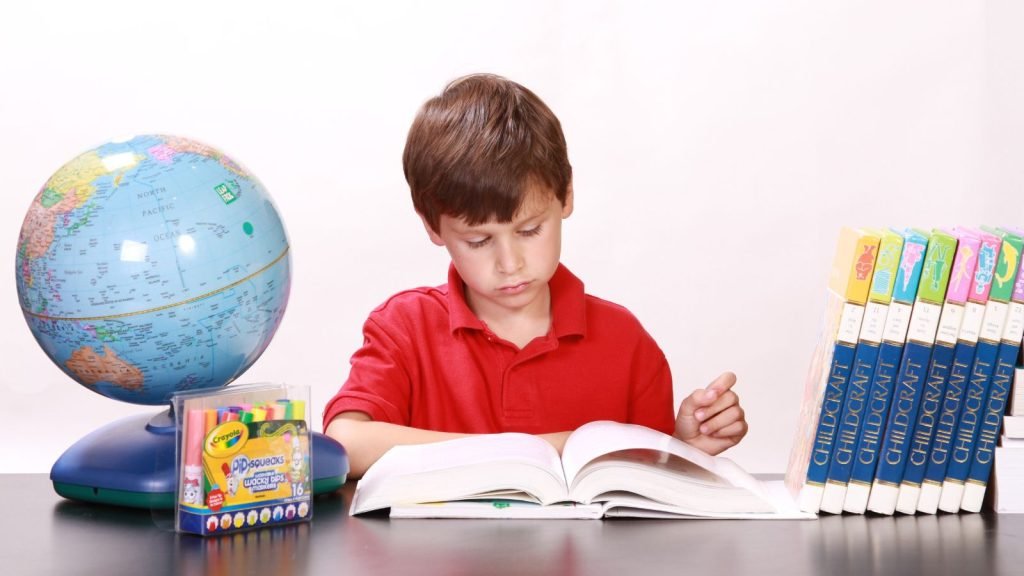
Organizing library books more systematically enhances accessibility and adds visual appeal to your child’s bookshelf.
Color Coding: Implementing a color-coded system makes it easier for children to locate their favorite books and fosters a sense of order. Assign a specific color to each genre or category of books, such as blue for adventure stories or red for science fiction. This not only aids in quick identification but also adds a vibrant touch to the bookshelf.
Labeling: Utilize labels to identify different sections or genres within the bookshelf. Simple labels with text or images can help children quickly find the shelf or type of bookcase they want, promoting independence and organization skills.
Facing Out Covers: Displaying books with their covers facing outward adds visual appeal and makes it a bit easier for children to browse and select their next read. This method lets them see the cover artwork and titles clearly, enticing them to explore different books and genres.
Step 5: Add Functional Storage
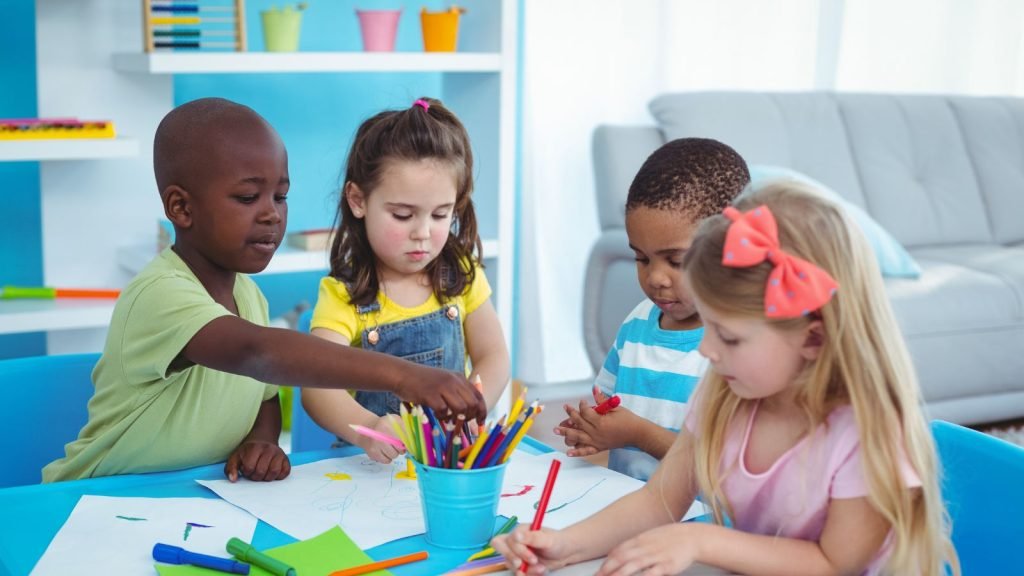
Incorporating essential safety features for nursery bookshelves is key when choosing book bins or placing items on higher shelves—especially if you have toddlers who like to climb or pull.
Book Bins or Baskets: Utilize book bins or baskets to categorize and contain smaller books, such as board books or paperback collections. These storage options keep and organize your library of books tidy and make them easily accessible for young readers to grab and enjoy.
Magazine Holders: Magazine holders are ideal for storing larger books, activity books, or magazines upright, preventing them from becoming damaged or lost within the bottom shelf or bookshelf. Placing them strategically adds visual interest and keeps reading materials neatly organized.
Stuffed Animal Corrals: Incorporating stuffed animal corrals or hammocks provides a creative storage solution for plush toys that often accompany reading sessions. These playful additions keep stuffed animals off the floor and neatly displayed, adding a whimsical touch to the front room or bookshelf area.
Step 6: Make It Fun and Engaging
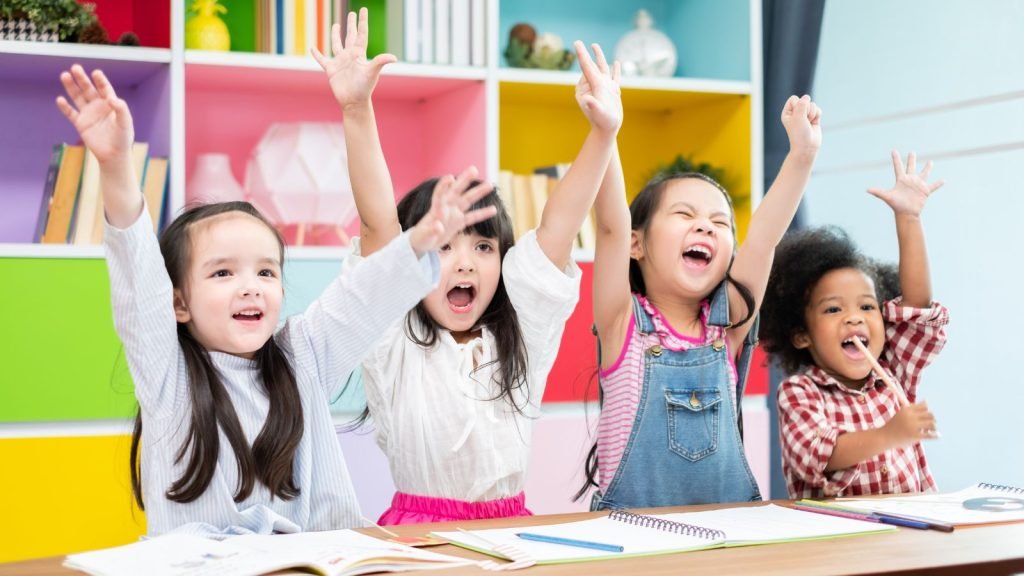
Transforming your child’s bookshelf into a fun and engaging space encourages enthusiasm for reading and fosters a love for books.
Add Personal Touches: Infuse the bookshelf with your child’s personality by incorporating personal touches such as framed artwork, decorative accents, or themed bookends. This customization creates a space that feels uniquely theirs and sparks joy in exploring their book collection.
Create a Reading Nook: Designate a cozy corner or nook adjacent to the bookshelf as a dedicated reading area. Include comfortable seating, soft blankets or cushions, and proper lighting to create an inviting atmosphere where children can immerse themselves in stories and imagination.
Display Books at Kids’ Eye-Level: Arrange books on lower shelves or display racks at your child’s eye level to encourage independent exploration and selection. This empowers children to choose books that capture their interest and promotes a sense of ownership over their reading choices.
Maintaining the Organized Bookshelf
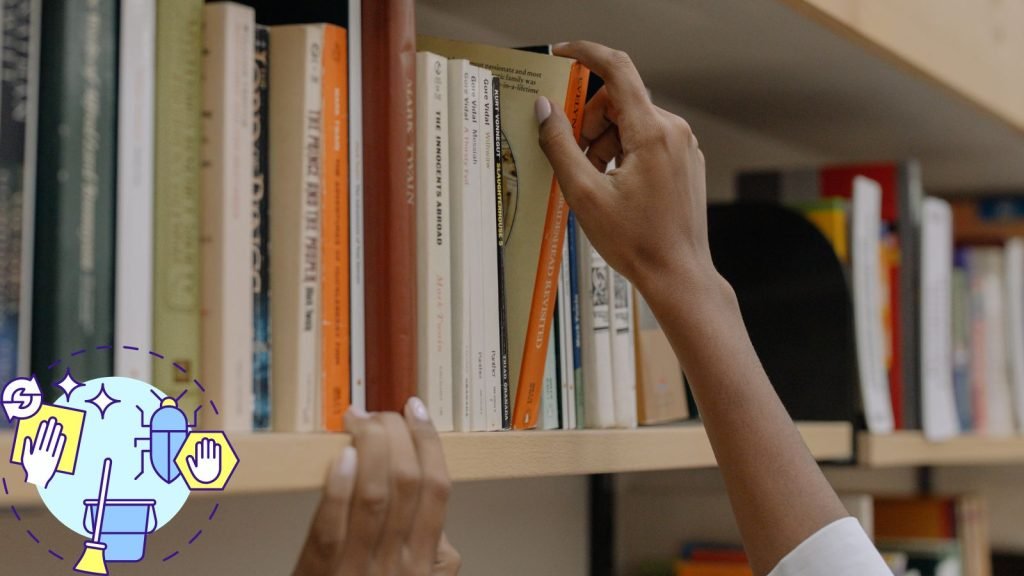
Regular maintenance is essential to preserving the organization and functionality of the second shelf on top of your child’s bookshelf.
Schedule Regular Decluttering: Set aside time periodically to declutter the bookshelf, removing any books that are no longer of interest or have been outgrown. This ensures that the bookshelf remains clutter-free and optimized for current reading preferences.
Rotate Books for Variety: Rotate books in and out of the bookshelf to introduce variety and maintain interest. This keeps the reading selection fresh and exciting, encouraging children to explore new stories and genres.
Involve Kids in the Process: Engage children in maintaining the organized bookshelf by involving them in decluttering sessions and book rotations. Please encourage them to take ownership of their book collection and participate in decision-making, fostering a sense of responsibility and pride in organizing their reading space.
Summary
In conclusion, creating a special place for books in your house and child’s life is essential for fostering a full life, a love of reading, and enriching family life. By empowering children to easily access and enjoy their reading collections through organized and accessible bookshelves, you can instill valuable organization skills from a young age.
Teaching children the importance of maintaining and decluttering their bookshelves regularly keeps the space tidy and ensures they can access books that spark their interest.
Frequently Asked Questions
How do I make my kid’s bookshelf look nice?
To make your kids’ bookshelf look nice, organize them into categories like board books, picture books, and chapter books. Consider using small nursery ideas to maximize space and style.
How do you arrange items on a bookshelf?
When organizing a bookshelf, group similar items together, such as organizing books by genre or size.
How do you style kid’s shelves?
They incorporate fun and colorful elements like themed bookends or decorative figurines to style kids’ shelves. Arrange books with covers facing outward for easy browsing, creating an engaging and visually appealing display.
How do you store children’s books?
Store children’s books using bins, baskets, or bookshelves to keep them organized and accessible. Sort books into categories and label bins or shelves for easy identification, making it simple for kids to store library books and find their favorite stories.
How do you display a lot of kid’s books?
Display many kids’ books using wall-mounted shelves or bookcases to maximize space.

